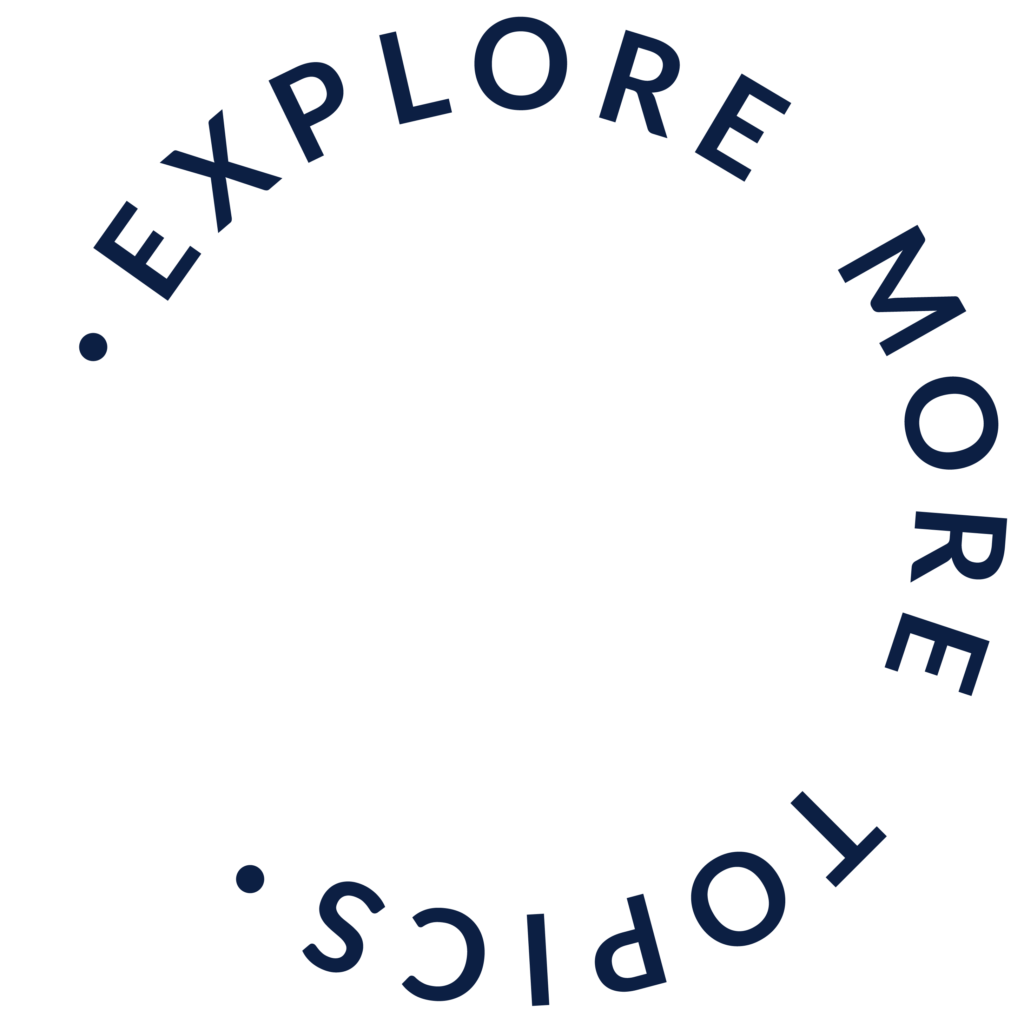Building Inspirational Resumes, CVs and Cover Letters
“ Be yourself because everyone else is already taken.” ~ Oscar Wilde
When it comes time to put passion to paper, many people struggle. Every year students tell me they have no problem conveying passion in person but when it comes time to construct a resume, energy and originality disappear. Instead of being themselves, they sound just like everyone else.
Hitting this wall happens for a couple of reasons. Face-to-face communication gives us additional tactics for conveying passion. We can engage non-verbals (e.g. tone of voice, posture), answer questions, and instantly cater our story to our audience. The biggest obstacle, however, is the unconscious shift in focus that takes place when it’s time to construct a resume. We move from a focus on story to a focus on structure. This shifts communication from why you do what you do to only what you do. As we discovered in Standing Apart in a Competitive Market, focusing on what instead of why takes the inspiration out of the conversation. The goal of this program is to learn how to put it back.
[mepr-show ifallowed=”show” rules=”4462″ unauth=”message”]
Sharing Experiences with Passion
A good resume or cover letter is a unique dialog between an applicant and an organization. Depending on the position you are applying for or the research grant you are submitting, certain experiences may be selected or rejected to best tell your story. Eventually, those experiences will fit into a structured format, but before we focus on format, we must build the story.
Building an inspirational resume or cover letter is a creative process and creativity doesn’t usually appreciate being rushed. Take your time considering:
- What story do you want to tell?
- What experiences best depict your vision, core values, or passion in action?
- What are your expectations for this job and what are your employer’s likely expectations for you?
- Which of these experiences best fit with this career move or this organization?
What Story Do You Want To Tell?
Clearly communicating your story brings energy and originality back to a resume, CV or cover letter. Think about the career move you are planning to make and ask yourself, what story do I want to tell?
The story you choose will be a reflection of your core values (why you do what you do) and your vision (where you want to go). It will be validated by the actions you have taken to bring your vision to life, the obstacles you have overcome and the strength of the skillsets you’ve built along the way.
This story will act as the framework for your resume, CV or cover letter. In some cases, it may be the same as your elevator pitch.
Taking Stock of Experiences
Experiences, obstacles, and skillsets showcase your ability to turn ambition into reality. To help select the best ones for your story, you need a database to choose from. Without a comprehensive list, you are likely to forget something or overlook an experience’s potential value. Here are a few categories to get you started:
- Formal education (BS or BA, DVM or VMD, MS, PhD, etc)
- Continuing education (certificate completion, Diplomat, etc)
- Research, publications, or special projects
- Work experience
- Volunteer work or externships Mentorship or education
- Speaking engagements
- Awards and honors
- Membership to organizations
Once you have a bare-bones list, flush each item out in more detail. What did you do in each experience? While technical skills are important, there are several other skillsets that communicate a good fit for an organization. Pay special attention to:
- Leadership
- Communication or education
- Tasks requiring a high degree of organization or responsibility
- Team activities
- Business or finance acumen
- Entrepreneurship (innovation outside an established organization)
- Intrapreneurship (innovation within an established organization)
- Problem-solving or conflict resolution
Can you quantify any of these experiences? For example:
- Did you grow membership in an organization from 100 members to 150?
- How many staff members did you manage?
- How many patients do you see each day?
Aligning Expectations
Associates and practice owners each come to the table with a set of expectations for the other. Figuring out those expectations shouldn’t be like playing a game of battleship. Everyone benefits when we know where the ships are located. The clearer both parties are about their expectations, the easier it is to find a good fit. Aligned expectations build a strong team, improve mental well-being and help everyone grow professionally.
Associate Perspective
The story shared through a resume or cover letter is an opportunity to communicate expectations and weed out practices that would not be a good fit. Think back to the expectations you defined in Standing Apart in a Competitive Market. How did you describe:
- Spectrum of Care
- Practice Culture
- Mentorship
- Caseload
How are these values reflected in your experiences and goals? For example, an associate who is passionate about overcoming barriers to care in rural areas, may have experience working in a high-caseload-low-cost clinic. To overcome limited access to care, she may have collaborated with the practice owner to add an ambulatory component to the practice.
Employer Perspective
Every practice has different expectations for its associates. Understanding an employer’s value system can help you choose which experiences or skillsets to showcase (provided they align with your vision and values). Taking the time to ask others about a potential employer and touring the practice website can offer valuable information about their vision, culture, values and operation style.
Here are some of the top expectations reported by practice owners for their associates (in no particular order of importance):
1. Good communication skills
2. Leadership
3. Love and passion for the profession
4. Business or financial acumen
5. Customer service
6. Patient outcome driven
7. Compassion
8. Honesty and integrity
9. Loyalty
0. Common sense
1. Coachable
2. Teamwork (i.e. plays well with others)
3. Strong work ethic
4. Basic surgery and diagnostic skills (new associates)
Cover Letters
Length
1 page
When To Use It
Use a cover letter with a resume to add a personal introduction to the practice.
Addressing the Letter
Address the letter to a specific person. If there is not one listed in the ad, try contacting the practice to find out to whom the application should be addressed.
Paragraph One
Why I’m Writing
The first paragraph energetically shares your “why” with a potential employer. It provides an introduction, states the position you are applying for and sets the frame for the remaining paragraphs. It usually also contains:
- Description of why you are interested in the position or company
- Reference to skills, traits, or interests that will benefit the practice or meet employer expectations (as outlined in the job listing)
Paragraph Two
How I’m Qualified
The second paragraph highlights actions you’ve taken to move your vision towards reality. Take careful note of any practice expectations described in the job listing and continue the conversation by addressing each one. Try to use specific experiences that demonstrate outcomes and skillsets.
Paragraph Three
Why I’m Right for This Job
The third paragraph addresses the mutual benefit both parties will receive from this new professional relationship. Take the time to do some research. Examine the practice website and gain insight from trusted members of your network. Use that information to demonstrate your knowledge of the hospital and highlight shared vision or values. As you tell your story consider sharing:
Why you should be considered for the job
Skillsets or experiences related to the available position
Your specific interest(s) in the practice (e.g. their mission, the spectrum of care, business needs, client focus, upcoming initiatives)
Paragraph Four
What Steps I’ll Take to Make Sure We Talk Further About My Qualifications
The final paragraph is the call to action. It should:
- Reiterate your interest in the position
- Thank the reader for their time and consideration
- Diplomatically request an interview
- Inform the reader you will make contact within a specific period of time (e.g. one week, ten days, two weeks)
- Contain contact information where it is best to reach you
Closing Your Letter
Include both a signature and printed name.
Pitfalls to Avoid
Most cover letters lose originality or drive because of a focus on format instead of story. When creating a cover letter, here are a few common pitfalls to avoid:
- Cookie-cutter formatting
- Failure to entice employers
- Over-emphasis on technical skills
- Lack of attention to interpersonal skills
- Failure to present a call to action
Resumes
Length
2-3 Pages
When To Use It
Private practice
Professional Summary
A professional summary is a very brief introduction that highlights your vision, passions, and unique skillsets. Like a cover letter, it sets the tone of your story by directing the reader’s focus to specific values, benefits, and experiences. Items to consider including:
- Keywords that match those of the job description
- Professional and technical experience
- Leadership and communication skills
- Interesting achievements
What to Avoid:
- Losing focus (showcasing too many skills or experiences)
- Buzzwords (e.g. enthusiastic, progressive, client communication)
- Vague adjectives (e.g. good, quality medicine)
- Highlighting run-of-the-mill skills (e.g. familiarity with MS word or Excel)
- Acronyms. Even common acronyms may be unfamiliar to certain readers. Eliminate uncertainty by spelling them out.
- Typos!
Curriculum Vitae (CV)
A resume tells one portion of your professional story. A CV represents the entire collection. As you might imagine, the further you grow in your career the longer it becomes. Because a CV is so comprehensive, it is only requested for select positions.
Even if your career is not heading in a direction that will require a CV, it is still a good idea to create one (at least a draft of one). Having a CV puts all of your professional accomplishments in one place so that when it is time to highlight a specific story on a resume, you already have a database of professional adventures to choose from.
Length
Unlimited
When To Use It
Internships, residencies, academia, industry, research
Sections
If you are a part of an industry that frequently chooses CVs over Resumes, your company may have a recommended template to organize your experiences. For everyone without that level of guidance, here are a few sections commonly found on a CV:
Professional Credentials | Professional credentials include all professional degrees (MS, PhD, DVM) and any board certifications (e.g. Diplomat American College of Veterinary Surgeons). As with resumes, avoid using acronyms.
Professional Experience | This section is the same as the Work Experience section of a resume. The only difference is that it will contain all work experience rather than a selection.
Education | The education section will contain the same basic information as a resume (college name, graduation year, degree obtained) but it will also contain:
- GPA and Class Rank
- Externships
- Certificates Earned
- Leadership Positions (e.g. class president, club president, SAVMA delegate)
Research and Publications | The research section contains the study title, brief description, collaborating institution, and study dates. Publications are further divided into two subsections; refereed journals (peer-reviewed) and non-refereed journals (non-peer reviewed). List publications using the same format as a bibliography. For pending publications include publication pending at the end.
Professional Presentations | Professional presentations are subdivided into National, State, Regional, and Local conferences where the presentations were made. Include the conference title, presentation titles and presentation year. You may also choose to note the type of presentations (e.g. poster, keynote, workshop).
Professional and Society Memberships | For all relevant professional memberships include the name of the organization (avoid acronyms), role or title if applicable, and membership origination year (e.g. Since 2012). Do not include student organizations in this section.
Advising and Mentorship | Briefly describe any formal mentorship and advising such as intern or resident training. Include institution name, type of mentorship or advising, and mentorship dates.
Committees and Outreach | This section includes the name of the organization, committee or outreach title, leadership role, and dates involved. You may also include a brief description of the committee or outreach effort.
[/mepr-show]







Responses
Thank you Courtney for sharing this comprehensive and detailed approach to resumes and cover letters. This is very timely as I am currently trying to add some pizzazz to those!
As always, let us know if you want any feedback as you get to your final drafts! I am sure they are going to be great – you have so much to bring to life!
This is very helpful! I have always struggled with updating my resume as I enter a new stage in life (knowing what is no longer relevant). This is a great approach to help share our story and convey our passion and experiences.
Thank you Courtney for sharing this great advise! I found the lists of most valuable skills and the step-by-step breakdowns of how to organize and write a professional CV and resume very helpful! Over the years I have been given various answers on how to/how not to write a CV versus a resume and I found it helpful to have an actual descriptive approach .